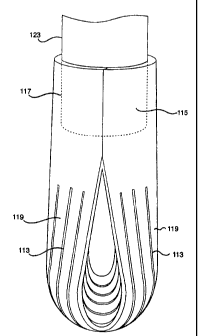Some of the information on this Web page has been provided by external sources. The Government of Canada is not responsible for the accuracy, reliability or currency of the information supplied by external sources. Users wishing to rely upon this information should consult directly with the source of the information. Content provided by external sources is not subject to official languages, privacy and accessibility requirements.
Any discrepancies in the text and image of the Claims and Abstract are due to differing posting times. Text of the Claims and Abstract are posted:
| (12) Patent: | (11) CA 2328241 |
|---|---|
| (54) English Title: | DISCHARGE OUTLET CONTROL |
| (54) French Title: | SYSTEME SERVANT A REGULER UNE SORTIE D'EVACUATION |
| Status: | Deemed expired |
| (51) International Patent Classification (IPC): |
|
|---|---|
| (72) Inventors : |
|
| (73) Owners : |
|
| (71) Applicants : |
|
| (74) Agent: | RICHES, MCKENZIE & HERBERT LLP |
| (74) Associate agent: | |
| (45) Issued: | 2008-01-08 |
| (86) PCT Filing Date: | 1999-03-18 |
| (87) Open to Public Inspection: | 1999-10-21 |
| Examination requested: | 2003-11-14 |
| Availability of licence: | N/A |
| (25) Language of filing: | English |
| Patent Cooperation Treaty (PCT): | Yes |
|---|---|
| (86) PCT Filing Number: | PCT/AU1999/000187 |
| (87) International Publication Number: | WO1999/052797 |
| (85) National Entry: | 2000-10-13 |
| (30) Application Priority Data: | ||||||
|---|---|---|---|---|---|---|
|
A discharge flow control means comprising a plurality of flexible
elongate elements (19) adapted to be supported at one end from a discharge
outlet (23) to extend from the outlet (23) in the direction of the discharge
and
across the flow path from the discharge outlet (23).
Moyens servant à réguler un écoulement d'évacuation et comprenant une pluralité d'éléments souples allongés (19) conçus pour être supportés à une extrémité par une sortie d'évacuation (23), de manière à s'étendre depuis la sortie (23) dans le sens de l'évacuation et à travers le trajet d'écoulement depuis ladite sortie (23).
Note: Claims are shown in the official language in which they were submitted.
Note: Descriptions are shown in the official language in which they were submitted.

For a clearer understanding of the status of the application/patent presented on this page, the site Disclaimer , as well as the definitions for Patent , Administrative Status , Maintenance Fee and Payment History should be consulted.
| Title | Date |
|---|---|
| Forecasted Issue Date | 2008-01-08 |
| (86) PCT Filing Date | 1999-03-18 |
| (87) PCT Publication Date | 1999-10-21 |
| (85) National Entry | 2000-10-13 |
| Examination Requested | 2003-11-14 |
| (45) Issued | 2008-01-08 |
| Deemed Expired | 2009-03-18 |
There is no abandonment history.
| Fee Type | Anniversary Year | Due Date | Amount Paid | Paid Date |
|---|---|---|---|---|
| Application Fee | $150.00 | 2000-10-13 | ||
| Maintenance Fee - Application - New Act | 2 | 2001-03-19 | $50.00 | 2000-10-13 |
| Maintenance Fee - Application - New Act | 3 | 2002-03-18 | $50.00 | 2002-02-27 |
| Maintenance Fee - Application - New Act | 4 | 2003-03-18 | $50.00 | 2002-12-24 |
| Request for Examination | $400.00 | 2003-11-14 | ||
| Maintenance Fee - Application - New Act | 5 | 2004-03-18 | $100.00 | 2004-01-15 |
| Maintenance Fee - Application - New Act | 6 | 2005-03-18 | $100.00 | 2005-01-10 |
| Maintenance Fee - Application - New Act | 7 | 2006-03-20 | $100.00 | 2006-01-12 |
| Maintenance Fee - Application - New Act | 8 | 2007-03-19 | $100.00 | 2007-01-29 |
| Final Fee | $300.00 | 2007-10-26 |
Note: Records showing the ownership history in alphabetical order.
| Current Owners on Record |
|---|
| HUMPHRYSON, IAN GEORGE |
| Past Owners on Record |
|---|
| None |